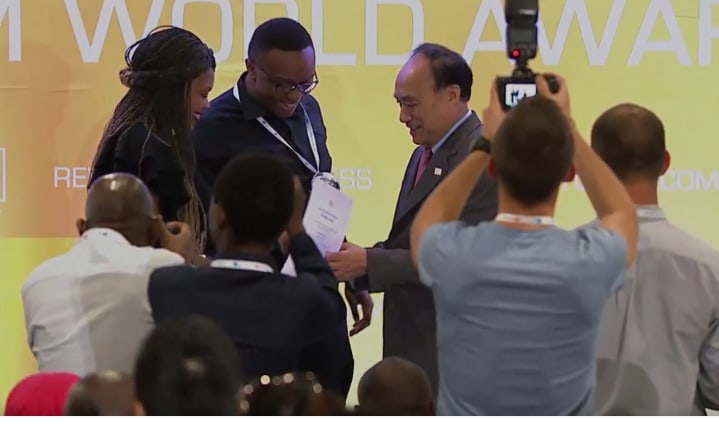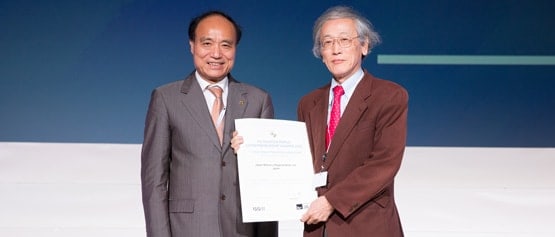When the International Telecommunication Union (ITU) opened World TELECOM 1971 in Geneva 50 years ago, officials proclaimed the dazzling new conference and exhibition a “message to the 21st century.”
“All those who had the opportunity to visit the various stands were able to appreciate the fundamental role played by ITU in the spectacular evolution of telecoms techniques and in the rapid expansion of the world,” observed the ITU Secretary-General of the time, Mohamed E. Mili.
The event launched a global platform for leading industry players, ITU members from the public and private sectors, international organizations, and academia to meet and greet, showcase innovation, and share knowledge.
Inauguration of Telecom 1971: Mohamed E. Mili, Secretary-General of ITU (left) with Robert Galley, France’s Minister of Posts and Telecommunications (right). Image credit: ITU.
Fifty years later, the now annual series achieves the same goals.
But much, of course, has changed.
18 cities around the world have hosted Telecom over the years, with several acting as hosts more than once.
The event changed format and name several times to meet the evolving needs of the industry. And for the past two editions, it has moved online in response to the global pandemic.
More substantially, people’s access to communications technology has blossomed, the structure of the industry and role of governments is radically different, and the technologies themselves are evolving faster than ever before.
The landscape then
Back in the 1970s, the telecommunication landscape was all about sending the voice over a fixed infrastructure, which was run by national operators out of government departments.
The cutting-edge technology exhibited at the very first Telecom included switching and transmission equipment, audio-visual equipment, and high-capacity submarine cables, along with wave guides and radio relays, data transmission equipment and a new generation of computers.
An impressive videophone demonstration included the ambitious prediction that at least 150 million such devices would be in use by the year 2000.
Satellites had already become a key part of public telecommunications, research, and television broadcasting services. The importance of satellite communications to reach remote and rural communities, no matter how challenging the terrain, would become increasingly clear over the decade.
By 1974, space radiocommunications systems were helping communities hit by natural disasters, keeping channels open with support centres and aiding the flow of emergency relief.
World TELECOM 1979 heralded a major technical breakthrough: electronic telephone switching.
System X, the result of industry-wide collaboration, made its public debut as an electronic system integrating telephone switching and transmission. The system allowed for the additional use of advanced electronic modules, which could expand the basic exchange into a highly sophisticated network operator. By replacing electro-mechanical switching systems with computers, System X provided the basis for a modern, flexible telecom system.
A force for growth
After the success of the 1971 inaugural event, ITUs Member States opted to carry on with Telecom on a regular basis – initially every four years – to gather “all the members of the great family of telecommunications,” in the words of Mr Mili.
Linking countries and companies would stimulate international trade, allow for the exchange of ideas and knowledge, and help to bridge the development gap, he said.
Telecommunications in the 1970s represented progress and a force for social, economic and cultural growth that could be applied universally for the benefit of all.
ITU Telecom continues to uphold those aims today.
In this new series of blogs marking the 50th anniversary of ITU Telecom, we look back at five decades of change for the industry, ITU and the flagship conference and exhibition series. The next episode revisits the 1980s and the dawn of mobile and e-mail.
Find out more on the 50th anniversary of ITU Telecom events – and on this year’s edition, ITU Digital World 2021, taking place online from September to December.
Header image from Telecom 1971: Telephone sets from the International Telephone and Telegraph (ITT) Corporation. Image credit: ITU
This blog was originally published on ITU News.
















